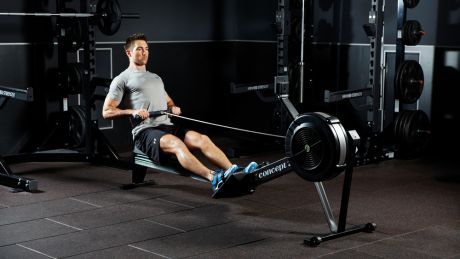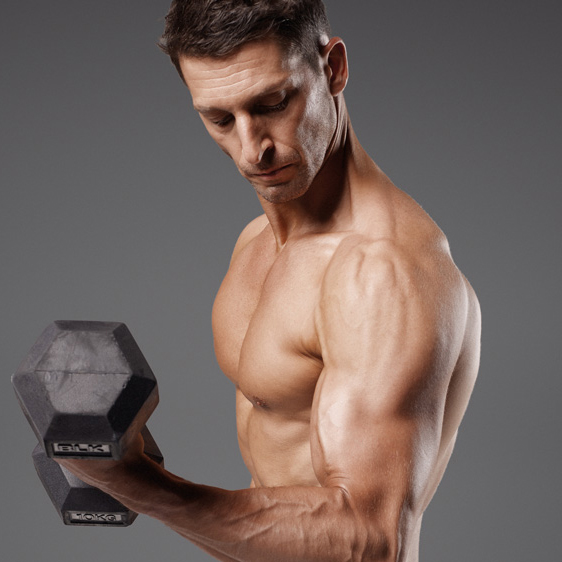Improve Your Cardio Fitness In The Gym With These Drills
If you only use your gym’s cardio machines to lean on after a heavy weights workout, now’s the time for a rethink

Most gyms, even hotel gyms home to less than half a dozen bits of kit, are likely to have a cardio machines which are a different league to the best home exercise bikes or best rowing machine. But if you’ve been dismissive of this traditional cardio equipment then you’re missing out on some important health, fitness and performance benefits.
Instead of using the bike as a five-minute warm-up ahead of a weights workout, or for a simple standalone session of easy pedalling because you’re paying too much attention to watching Netflix on your phone, try these four bike and four rowing drills to strip away fat, build muscle size, strength and endurance, and improve the health of your heart and lungs.
After all, the benefits of cardiovascular training are huge: improving your cardio fitness levels through regular bike and rower work can lower your blood pressure and reduce your risk of serious heart problems in later life.
In the shorter term, the drills in this workout will boost your work capacity – a foundation of general fitness on which your more specific training goals can be built.
Whether you’re an aspiring bodybuilder, a casual football or rugby player, or just someone who trains for fun, being able to increasingly handle a greater workload will stand you in great stead.
If you’re a more serious athlete, greater cardiovascular fitness will improve your VO2 max (the maximum amount of oxygen your body can use in one minute of exercise, per kilo of bodyweight). When your fitness levels improve, so does your VO2 max, meaning you can exercise with a much greater intensity. In real terms, the greater your max the more able you will be to lift heavier weights for more reps, prolong a run, keep up your pace and stamina during sports, and much more besides.
If these drills give you the taste for challenging cardio, read up on heart rate training and find more sessions with our collections of the best exercise bike workouts and rowing machine workouts. To go all in, follow this rowing workout plan.
Get the Coach Newsletter
Sign up for workout ideas, training advice, reviews of the latest gear and more.
Bike Drills
“Stand next to the bike, then adjust the seat so it’s the same height as your hip,” says PT Tom Eastham. “Then sit on the saddle and make sure your leg is straight with your heel on the pedal at the bottom of your pedal stroke. This ensures the correct position when you’re cycling properly.”
EMOM sprints
How Set the bike at the correct height, then sit on it and warm up for five minutes, pedalling at a comfortable pace. Then start the EMOM sprints: every minute on the minute, do 20 seconds of sprinting followed by 40 seconds at recovery pace. Repeat for a total of 20 minutes. Then try not to fall off the bike.
Why Alternating between bouts of all-out effort and longer recovery pedalling is one of the smartest ways to burn fat and improve cardiovascular health and fitness.
20-10 splits
How Start with a five-minute warm-up at a high cadence with low resistance. Then cycle for 20 seconds with medium resistance, then ten seconds of low resistance - that’s one rep. Do eight reps then do 60 seconds of recovery cycling at a low resistance, then repeat the drill a further three or four times, ending with a five-minute warm-down.
Why This Tabata training-style drill is great for both burning body fat, because of its intensive, heart-rate raising bursts of activity, and building endurance, thanks to the repeated bouts with short rests.
Need for speed
How Do an easy ten-minute warm-up with low resistance, then for the next ten minutes, sprint the first ten seconds of each new minute, using the other 50 seconds to recover. Then for the next ten minutes, alternate between 60 seconds of hard effort (around 80-90% of maximum heart rate) with 60 seconds of recovery cycling.
Why A high cadence – the speed you turn over the pedals – will improve your power and speed output, and alternating between bouts of hard and easy effort improves your muscles’ ability to recover faster.
The power hour
How An hour on the bike is a tough challenge – anything close to 35km is a good and achievable goal – and it’s a mental test as much as a physical one. Work your way up to it, starting with a 20-minute ride at around 80% of your maximum heart rate, then add five minutes each time you train.
Why You’ll develop mental strength to keep digging deep when things get tough, which has huge benefits in the gym (and other parts of your life), and you improve your muscles’ ability to work harder for longer to build leg strength and endurance.
Rowing Drills
“Before rowing, spend five minutes working on your mobility and glute activation,” says Eastham. “Most of us spend all day sitting down, so firing up the working muscles first will prevent injury and improve performance.”
Row and repeat
How Put the damper setting at 10, then sit on the rower with feet securely fastened and an overhand grip on the handle. Set the screen to display time and distance. Row for five minutes at a comfortable pace, then row for 250m as fast as possible while maintaining proper form. Do 60 seconds of easier recovery rowing, then do 250m at maximum effort. Do ten all-out 250m rows.
Why This interval-training drill doesn’t allow much recovery time between bouts, so with each subsequent effort it gets tougher on your heart, lungs and muscles.
2km personal best
How This one is pretty self-explanatory: set up the screen to display a 2km distance and start rowing. It’s better to start at 2km and watch the distance come down than to start at zero and watch it creep up slowly.
Why This challenge requires smart pacing so you don’t burn out before the finish, so start slowly and then increase your speed as you progress. After your first attempt you will then have a benchmark time you can attempt to better next time. Doing training drills of all-out 500m and 1km rows will help you bring down your 2km PB.
- To achieve an impressive seven minute time, follow this 11-day 2K rowing plan
Pyramid power
How After a five-minute warm-up row in which you gradually increase your effort level, row 500m as quickly as you can, then rest for the same amount of time. Then do 400m, with the same amount of rest, then 300m and so on until you finish with a 100m all-out effort.
Why Accumulated fatigue – where you don’t get enough recovery time for the effort just expended – makes the shorter distances feel far harder than they would if you did them when fresh, so you’re forced to work harder to keep the times down.
500m fastest finish
How Warm up for five minutes with some gentle rowing, gradually increasing the intensity. Then row 500m in two minutes. Rest for 90 seconds, then aim to row your second 500m in 1min 55sec. Repeat this pattern of 500m, doing it five seconds faster each time, resting 90 seconds between bouts, for as many 500m rounds as you can.
Why The 500m time challenge is fantastic for building both power and endurance, and will teach you how to be better at pacing yourself while still improving work capacity. You’re also guaranteed to work to failure.

Joe Warner is a highly experienced journalist and editor who began working in fitness media in 2008. He has featured on the cover of Men’s Fitness UK twice and has co-authored Amazon best-sellers including 12-Week Body Plan. He was the editor of Men’s Fitness UK magazine between 2016 and 2019, when that title shared a website with Coach.









